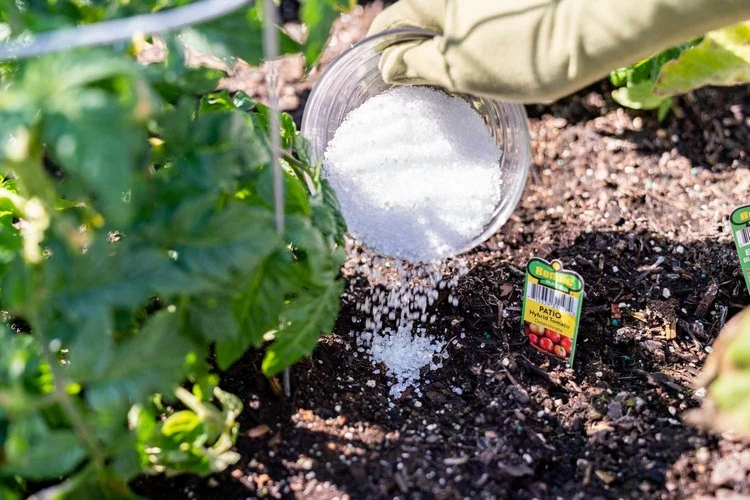If you’re looking for a natural and inexpensive way to fertilize your plants, you’ll probably be surprised to find it already under your sink. Inexpensive Epsom salt has proven its effectiveness as a natural fertilizer and is many gardeners’ secret weapon for lush flowers and tasty fruits and vegetables. We shall explain to you which plants are most suitable for fertilizing with Epsom salt and how to use it properly.
Fertilizing With Epsom Salt: How and for Which Plants Is It Efficient?
Epsom salt has been used to fertilize gardens for centuries because it is a popular supplement in organic gardening. It helps plants to bloom lushly and greenery to stand out more. Plants will even become bushier when fertilized with Epsom salts. In this article, learn which plants should be fertilized with the effective home remedy and the easiest methods to use it.
What Is Epsom Salt?
Epsom salt is a natural mineral composed almost entirely of magnesium and sulfur. These two nutrients are very important for healthy plant growth.
Sulfur promotes chlorophyll formation, supports nitrogen utilization and makes the plants more resistant to diseases.
Magnesium improves the cell structure of the plants and helps them absorb other nutrients better.
Unlike traditional fertilizers, Epsom salt is much safer as it does not accumulate in the soil over time.
Fertilize the Soil Directly with Epsom Salt
The first method of fertilizing with Epsom salts is to apply it directly to the soil. Use two tablespoons per square meter or sprinkle the home remedy around the base of the plant. Repeat the process once a month. This method is useful for both the garden and houseplants such as orchids, and is especially helpful before seeding or after transplanting in the garden.
You can fertilize the following plants with this method:
- Azaleas and Rhododendrons: Sprinkle the root area with a tablespoon of Epsom salt every two to four weeks.
- Roses: For lush, green foliage, sprinkle 4 oz/120g of Epsom salts around the base of the plant.
- Tomatoes and Peppers: to give these vegetable plants a good start, add a tablespoon of Epsom salt to each planting hole before planting the seedlings and continue to fertilize them twice a week with the natural remedy.
- Trees: Fertilize the trees in your yard with Epsom salts at the beginning of each season. This will help the tree roots absorb more minerals and increase flower and fruit production.
Also read: The Hidden Benefits of Epsom Salt for Plants: A Comprehensive Guide
Mix Epsom Salt with Water
Use an Epsom salt solution to fertilize the garden and house plants. Mix 1 to 2 tablespoons of Epsom salt with 1 gallon/4 liters of warm water and water the plants once a month during the growing season.
This solution can also be used as a foliar spray, spraying the foliage once in spring and once after flowering.
- Roses: Saturate the soil with the solution to encourage lush green foliage and blooming. Avoid spraying the leaves or they may burn.
- Lawn: To prevent yellowing of the lawn and to encourage lusher, greener growth, spray the lawn with the solution using a tank sprayer or a hose with a spray attachment.
- Tomatoes: Once the tomatoes are blooming and bearing fruit, mist them weekly with the foliar spray.
- Houseplants: Spray the houseplants with a solution of Epsom salts and water if you notice a magnesium deficiency. One sign of this is when the leaves turn yellow between the green veins.
Add to the Compost
When the compost contains magnesium, it helps break down organic matter and makes it easier for plants to access the nutrients they need.
You can add Epsom salts to the compost to encourage plant growth and prevent nutrient deficiencies. Pour a solution of 1 tablespoon of Epsom salt and 0,5gallons/2L of water to enrich it.
Also read: How and When to Add Lime to the Garden
Test the Soil Before Fertilizing
Before using Epsom salt as a fertilizer, it is best to test the soil to see if it is deficient in magnesium. If your soil is sandy or very acidic, it is likely to be low in magnesium. However, most soils contain plenty of magnesium and sulfur if you add some compost regularly.
Also note that there are many crops, such as beans and leafy greens, that thrive in soil that is low in magnesium.






